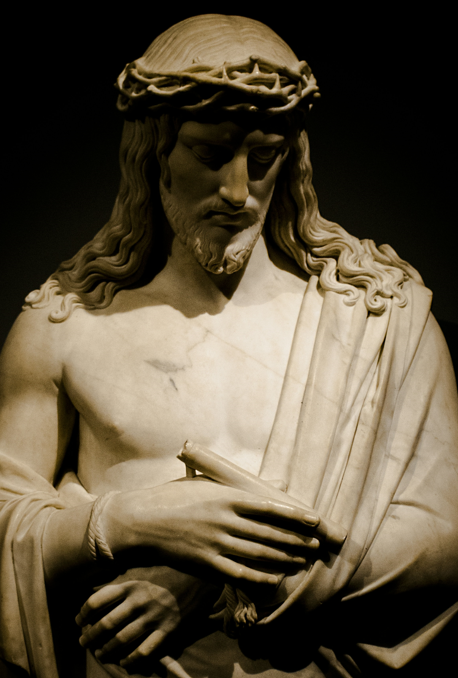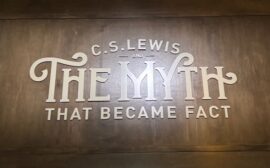Steven Johnson | April 13, 2025
Jesus’ resurrection is the key to the whole Christian faith. Acts 1:2-3 says,” until the day when he was taken up after he had given commands through the Holy Spirit to the apostles whom he had chosen. He presented himself alive to them after by many proofs, appearing to them during the 40 days and speaking about the kingdom of God.” Romans 1:1-6 talks again about “the Son of God in power….by his resurrection from the dead” 1 Peter 1:3 reads in part, ” …. hope through the resurrection of Jesus Christ from the dead.” These are just a few verses about the importance of the resurrection to the Christian faith. The four Gospels go into detail about his death and resurrection and were written between 55 A.D. and 90 A.D. Matthew 26-28 talks about the plot to arrest Jesus, his trial, Peter’s denial of Jesus, his death on the cross, Jesus being laid in the tomb, guards being posted at the tomb, Jesus rising from the dead and the Great Commission. In Mark 14-16 John Mark describes the same events from his perspective. Luke 22-24 describes the accounts from Luke’s perspective, and John 18-21 describes the account from John’s perspective.
What is needed to try to prove something?
Can Jesus’ resurrection from the dead be 100% proven? No, when professional historians talk about historical events, they talk about the strength of probability that an event occurred rather than at a 100% level. An example Dr. Habermas gave in his book “The Case for the Resurrection of Jesus” is George Washington, who was our first president. Were we there to see him being inaugurated as president? Were there videos of the event? Could documents of the event have been forged or stories invented? We can know with a high degree of certainty that he was our first president, and that is what historians look at. With Jesus, we can do a similar analysis. Five historical principles to apply to the Resurrection: 1) Multiple, independent sources support historical claims better than one source; 2) Affirmation by a neutral or hostile source is usually considered stronger than affirmation from a friendly source since bias in favor of the person or position is absent; 3) People usually don’t makeup details regarding a story that would tend to weaken their position; 4) Eyewitness testimony is usually considered stronger testimony then heard from second or third source; 5) An early testimony from very close to the event in question is usually considered more reliable than one received years after the event. (1) With these in mind, for this article, I will only concentrate on Jesus’ resurrection from the dead and not other side topics.
We will start with Jesus being a historical figure and that He died by crucifixion. Matthew, Mark, Luke, and John all record Jesus dying by crucifixion. Crucifixion was a common form of execution during that period. The Romans used it to punish the lower-class criminals, especially those they thought were the worst of the worst criminals. Many non-biblical sources have said Jesus was crucified. An atheist New Testament scholar, Bart Ehrman, sums it up,” The most certain element of the tradition about Jesus is that he was crucified on the orders of the Roman prefect of Judea, Pontius Pilate. The crucifixion is independently attested in a wide array of sources and is not the sort of thing that believers would want to make up about the person proclaimed to be the powerful Son of God.”(2) “Ehrman has listed over 20 independent sources for the historical Jesus, at least fifteen of which corroborate the crucifixion of Jesus, and all of which he dates to within 100 years after the crucifixion. Ten sources are drawn from the New Testament, while five others are extrabiblical.”(3) Some non-Christian sources include Josephus, Tacitus, Lucitus, Mara Bar-Serapin, Talmud, Clement of Rome, the Gospel of Peter, and the Gospel of Truth.(4) Also, how the Gospels recorded what they did to Jesus’ body during the actual crucifixion was common practice during that period.
Jesus’ disciples’ experience
Jesus’ disciples claimed to have seen the risen Lord after his crucifixion and, as a result, changed from being fearful and hiding their identity to being extremely open and telling everyone about Jesus being alive and risen from the dead. They were steadfast in their faith even when they were imprisoned, tortured, and facing their own deaths as a result of their faith and hope in the risen Jesus. There are three categories of sources: 1) The testimony of Paul about the disciples,2) the oral traditions that passed through the early church, and 3) the written works of the early church. (5) Paul wrote extensively about the Resurrection; an example is 1 Corinthians 15:1-12. Paul wrote independently of Jesus’ disciples even though he was in contact with several of them. While we would have video recorders or cell phones to record the events if they were today, they used creeds (oral information and oral summaries) to pass on the information from one person to another and from one generation to the next. An example of a creed is the “Apostles Creed, “ and it is felt that the quote from 1 Corinthians 15:35 was a creed that he received from Peter and James when he visited them in Jerusalem. An example of oral summaries would be the sermons and parables that Jesus gave during his ministry (Matthew 13). The four gospels were written in the first century and collaborated with what the disciples witnessed with Jesus’ death and resurrection. The early church leaders would have known, been instructed by, or known people who worked closely with the disciples. Some of these early church leaders were Clement, Irenaeus, Tertullian, Polycarp, Origen, and Eusebius. An example of these writings is Polycarp, Polycarp was martyred in Smyrna (modern-day Izmir, Turkey) around the year 160 at the age of eighty-six. Around 110, he wrote a letter to the Philippian church, speaking of the righteousness and endurance witnessed in the lives of several, including ”Paul himself and other apostles.” Of them, he says, “ For they did not love the present age, but him who died for our benefit and our sake was raised by God.” In fact, Polycarp mentions the resurrection of Jesus five times in his letter to the church in Philippi. (6)
Paul, the church persecutor, suddenly changed
This is recorded in several places in the Bible in Acts 22. The importance of Saul later called Paul’s conversion from persecuting and trying to destroy those who believe in the risen Jesus (the Church) to being one of the church leaders spreading the truth of the risen Jesus is normally someone who is an enemy of an event occurring doesn’t change to being one of the biggest advocators of the event. Paul’s conversion was based on his seeing the risen Jesus and his willingness to suffer for the gospel, ultimately dying a martyr for Jesus. Paul’s conversion and story are well documented by Paul himself, as well as Luke, Clement of Rome, Polycarp, Tertullian, Dionysius of Corinth, and Origen. (7)
James, the half-brother of Jesus, went from being a skeptic to believing
James and Jesus’ other half-brothers didn’t believe he was who he said he was (Mark 3:31-35, Mark 6: 1-6, and John 7: 1-5.) even when he was hanging on the cross, he told his beloved disciple to take care of his mother, not his brothers since they weren’t there. These all indicate that his family didn’t believe in him. For James, this all changed when Jesus appeared to him (1 Corinthians 15:7). Acts 1:12-14 relates that after Jesus ascended into heaven, the disciples, the women, Mary, Jesus mother, and Jesus’ brothers, all got together and prayed. In Galations1:18-19, Galatians 2: 1-10, and Acts 15:1-31, James is identified as a leader in the Jerusalem church. James died a martyr for Christ. “James’s martyrdom is attested by Josephus, Hegesippus, and Clement of Alexandria …. Therefore, his martyrdom is attested by both Christian and non-Christian sources.” (8)
The Empty Tomb
75% of critical scholars believe the empty tomb is a historical event. (9) Three arguments in favor of the empty tomb are: 1) The Jerusalem factor. Jesus was crucified in Jerusalem, and his first appearances were in Jerusalem. If Jesus hadn’t appeared to the people he did and his body remained in the grave, Christianity would never have occurred. All the Jewish, Roman, and other leaders would have had to do was show Jesus’ body still in the tomb to stop Christianity before it even got started. But there was no body to show since he was risen. 2) Enemy Attestation. The empty tomb is attested not only by Christian sources. Jesus’ enemies admitted it as well, albeit indirectly. Hence, we are not employing an argument from silence. Rather than point to an occupied tomb, early critics accused Jesus’ disciples of stealing the body (Matthew 28:12-13; Justin Martyr, Trypho 108; Tertullian, De Spectaculis 30). There would have been no need for an attempt to account for a missing body if the body had still been in the tomb. (10) 3) The testimony of women. In Jesus’ day, women were not considered reliable witnesses, so why, if you were going to steal Jesus’ body, would the first witnesses you record be women? If you wanted a reliable witness, you would have named men. (11) Depending on which of the Gospels you read, they say, Mary Magdalene, Mary the mother of James, Joanna, Salone, and other women were the first to see Jesus, and they told the disciples. This adds to the empty tomb’s credibility because of the embarrassment principle.
To conclude, Jesus did come down to earth, was crucified, and rose from the grave. The resurrection is the key to the Christian faith. Without the resurrection, there is no hope for us as individuals, a country, or our world. As this article showed, and the information I gave is but the tip of the iceberg, most historians would say the resurrection did occur. My wife, Michelle, recently, and a missionary friend, Mike, will soon be with their RISEN LORD and SAVIOR. Even though there is historical evidence that Jesus rose from the dead as he said he would, it still takes faith in the work he did to spend eternity with him ultimately.
About the Author
Steven Johnson, DDS
 Steven served 36 years as a dentist in his hometown of Buffalo Center, Iowa before retiring from his practice. He is a graduate of the University of Iowa Dental School in 1987. He currently resides in Mankato, Minnesota. Dr. Johnson is a devout disciple of Christ. He faithfully attends Wooddale Church of Eden Prairie, Minnesota. Steven was the husband of our late beloved Dr. Michelle Johnson
Steven served 36 years as a dentist in his hometown of Buffalo Center, Iowa before retiring from his practice. He is a graduate of the University of Iowa Dental School in 1987. He currently resides in Mankato, Minnesota. Dr. Johnson is a devout disciple of Christ. He faithfully attends Wooddale Church of Eden Prairie, Minnesota. Steven was the husband of our late beloved Dr. Michelle Johnson
Dr. Johnson’s desire is to continue to honor Michelle with the passion she held so dear–writing articles that glorify God. He hopes to offer believers further reasons to trust in the risen Savior and desires to share the gospel with the lost, prompting them to accept Christ as their Savior.
Bibliography
Gary R. Habermas and Michael R. Licona, The Case for the Resurrection of Jesus, Kregel Publications, 40.
Gary R. Habermas, On the Resurrection; Vol. 1 Evidences, B&H Academic,283.
Gary R. Habermas, On the Resurrection; Vol 1 Evidences, B&H Academic,286.
Gary R. Habermas, On the Resurrection; Vol 1 Evidences, B&H Academic,288. Gary Habermas and Michael R. Licona, The Case for the Resurrection of Jesus, Kregel Publication,50.
Gary R. Habermas and Michael R. Licona, The Case for the Resurrection of Jesus, Kregel Publication,51.
Gary R. Habermas and Michael R. Licona, The Case for the Resurrection of Jesus, Kregel Publications,55.
Gary R. Habermas and Michael R. Licona, The Case for the Resurrection of Jesus, Kregel Publication,65.
Gary R. Habermas and Michael R. Licona, The Case for the Resurrection of Jesus, Kregel Publications, 68.
Gary R. Habermas and Michael R. Licona, The Case for the Resurrection of Jesus, Kregel Publications, 70.
Gary R. Habermas and Michael R. Licona, The Case for the Resurrection of Jesus, Kregel Publications,71.
Gary R. Habermas and Michael R. Licona, The Case for the Resurrection of Jesus, Kregel Publications, 72.






Just curious: In light of the evidence for Jesus’ resurrection, do you believe it is possible for a 21st century unbeliever to be reasonable in rejecting the gospel?
Or do you believe your interpretation of the evidence for Jesus’ resurrection is so compelling that only fools (unreasonable persons) would ever propose a different interpretation?